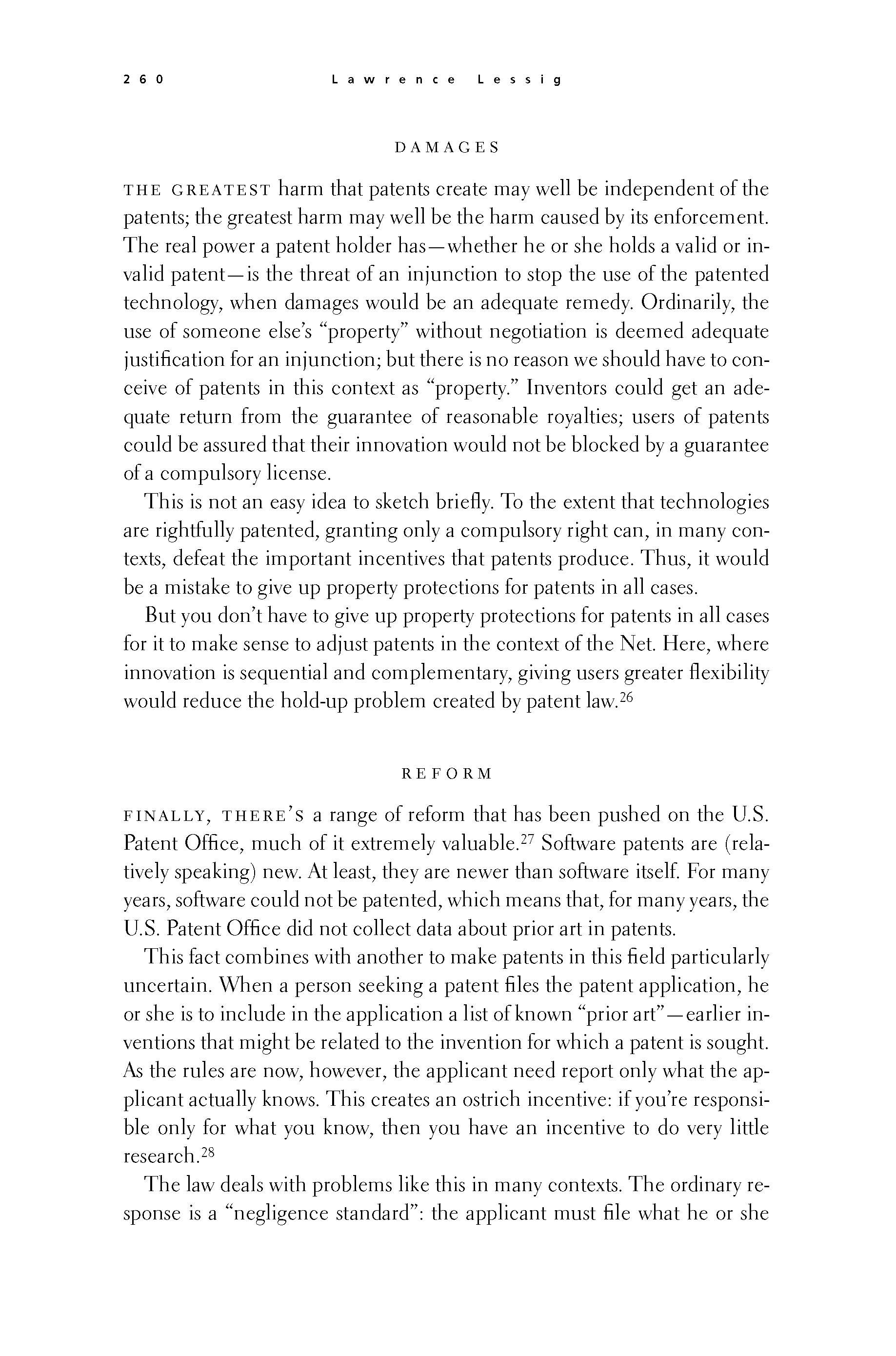 p259 _
-chap- _
toc-1 _
p260w _
toc-2 _
+chap+ _
p261
p259 _
-chap- _
toc-1 _
p260w _
toc-2 _
+chap+ _
p261
/tab\/tab\DAMAGES/tab\/tab\
The greatest harm that patents create may well be independent of the
patents; the greatest harm may well be the harm caused by its enforcement.
The real power a patent holder has -- whether he or she holds a valid or in-
valid patent -- is the threat of an injunction to stop the use of the patented
technology, when damages would be an adequate remedy. Ordinarily, the
use of someone else's "property" without negotiation is deemed adequate
justification for an injunction; but there is no reason we should have to con-
ceive of patents in this context as "property." Inventors could get an ade-
quate return from the guarantee of reasonable royalties; users of patents
could be assured that their innovation would not be blocked by a guarantee
of a compulsory license.
This is not an easy idea to sketch briefly. To the extent that technologies
are rightfully patented, granting only a compulsory right can, in many con-
texts, defeat the important incentives that patents produce. Thus, it would
be a mistake to give up property protections for patents in all cases.
But you don't have to give up property protections for patents in all cases
for it to make sense to adjust patents in the context of the Net. Here, where
innovation is sequential and complementary, giving users greater flexibility
would reduce the hold-up problem created by patent law.[14-26]
/tab\/tab\REFORM/tab\/tab\
Finally, there's a range of reform that has been pushed on the U.S.
Patent Office, much of it extremely valuable.[14-27] Software patents are (rela-
tively speaking) new. At least, they are newer than software itself. For many
years, software could not be patented, which means that, for many years, the
U.S. Patent Office did not collect data about prior art in patents.
This fact combines with another to make patents in this field particularly
uncertain. When a person seeking a patent files the patent application, he
or she is to include in the application a list of known "prior art" -- earlier in-
ventions that might be related to the invention for which a patent is sought.
As the rules are now, however, the applicant need report only what the ap-
plicant actually knows. This creates an ostrich incentive: if you're responsi-
ble only for what you know, then you have an incentive to do very little
research.[14-28]
The law deals with problems like this in many contexts. The ordinary re-
sponse is a "negligence standard": the applicant must file what he or she
[[260]]
p259 _
-chap- _
toc-1 _
p260w _
toc-2 _
+chap+ _
p261